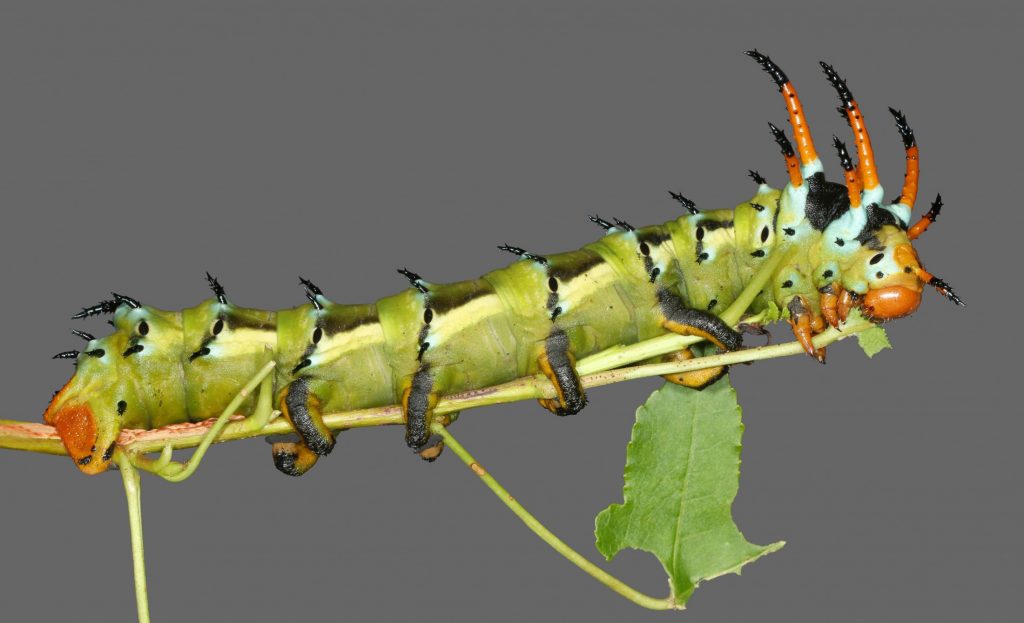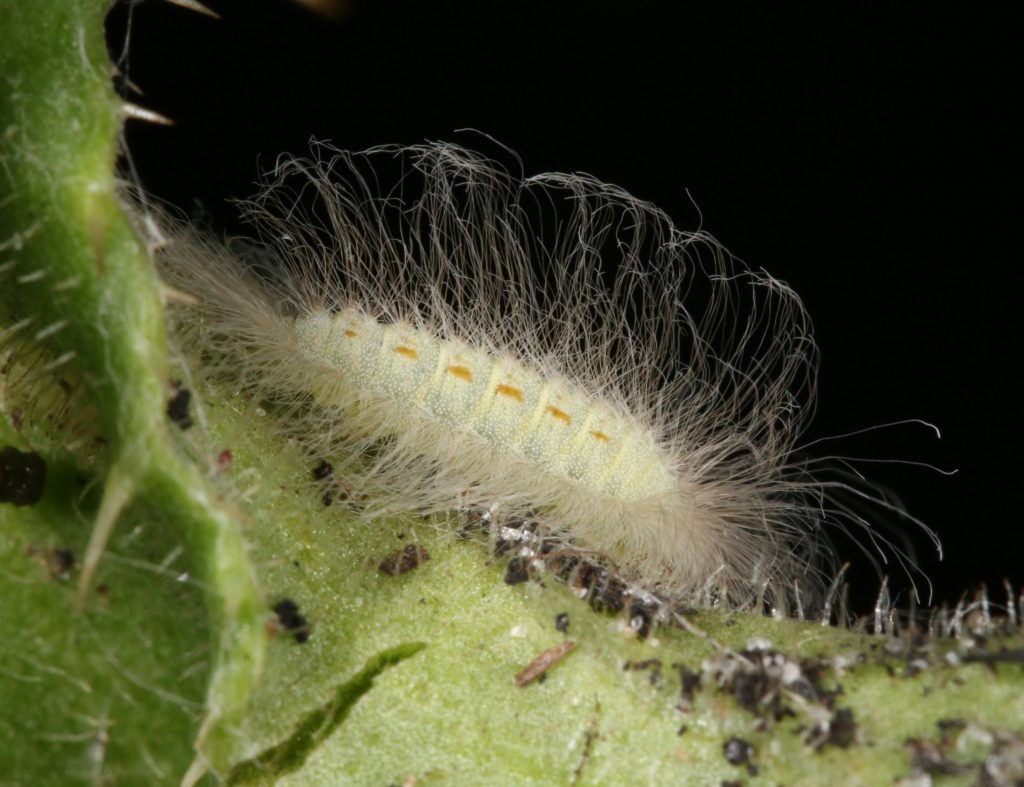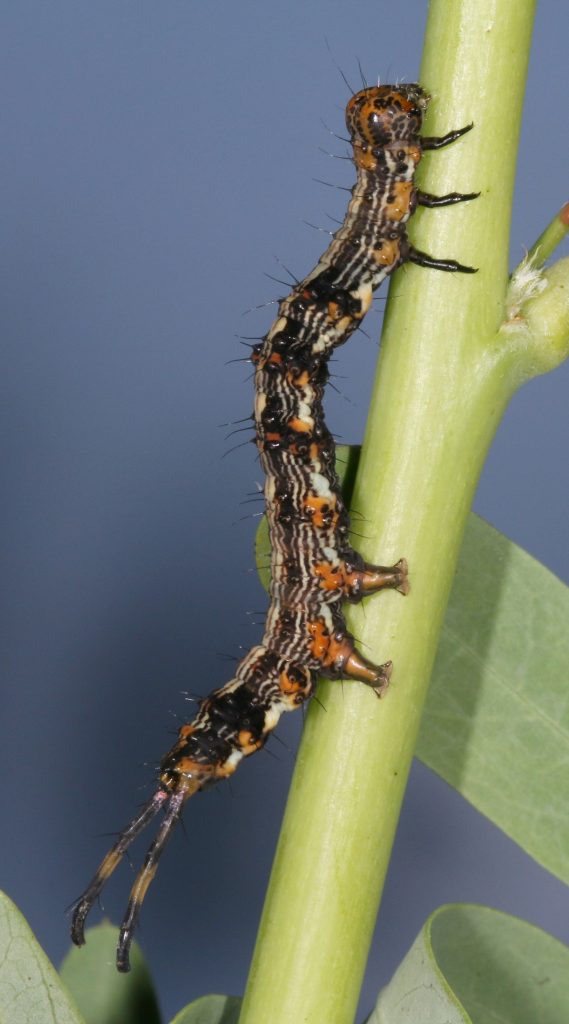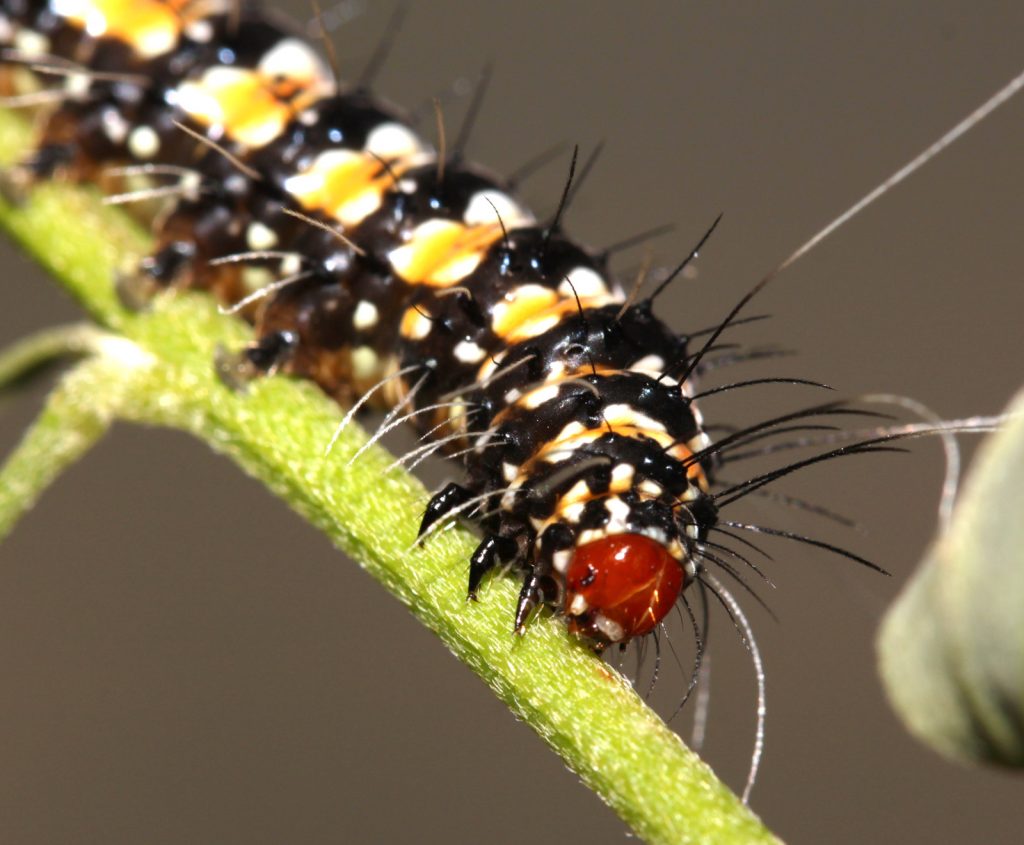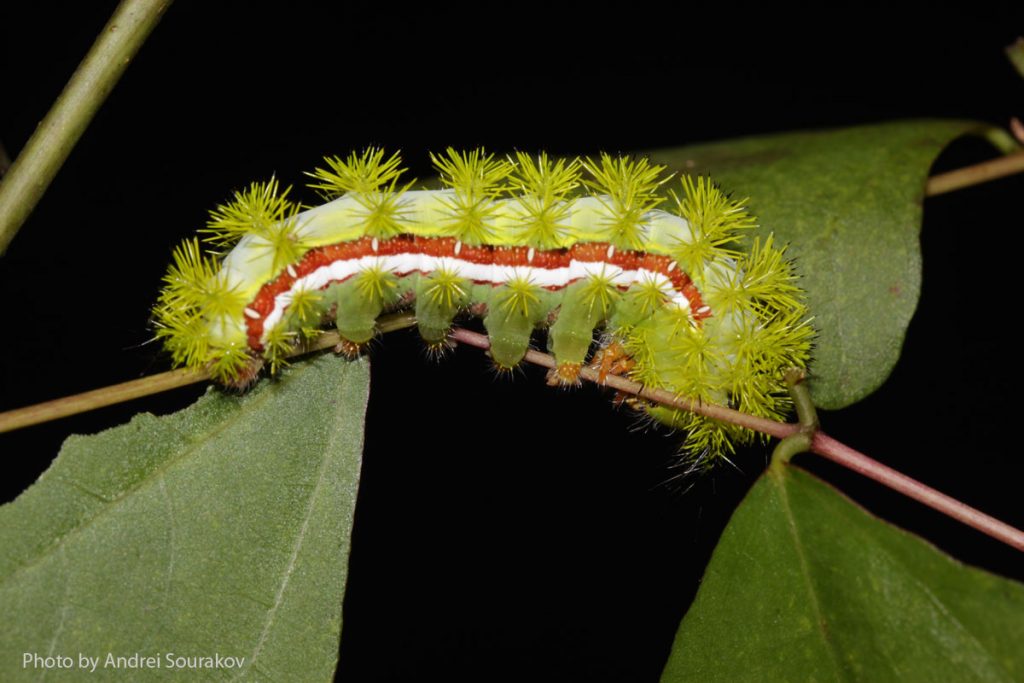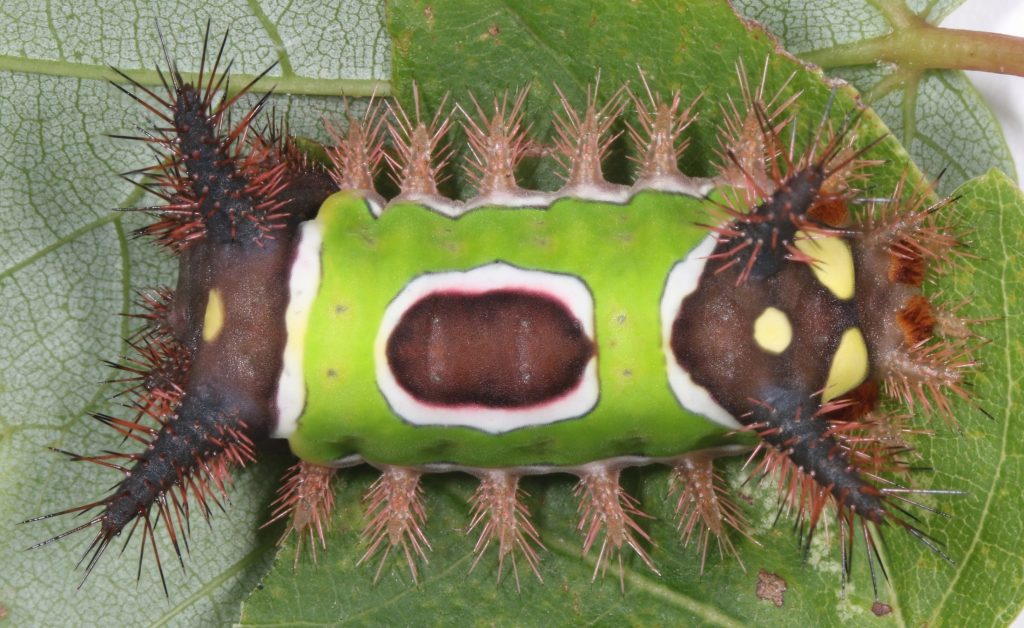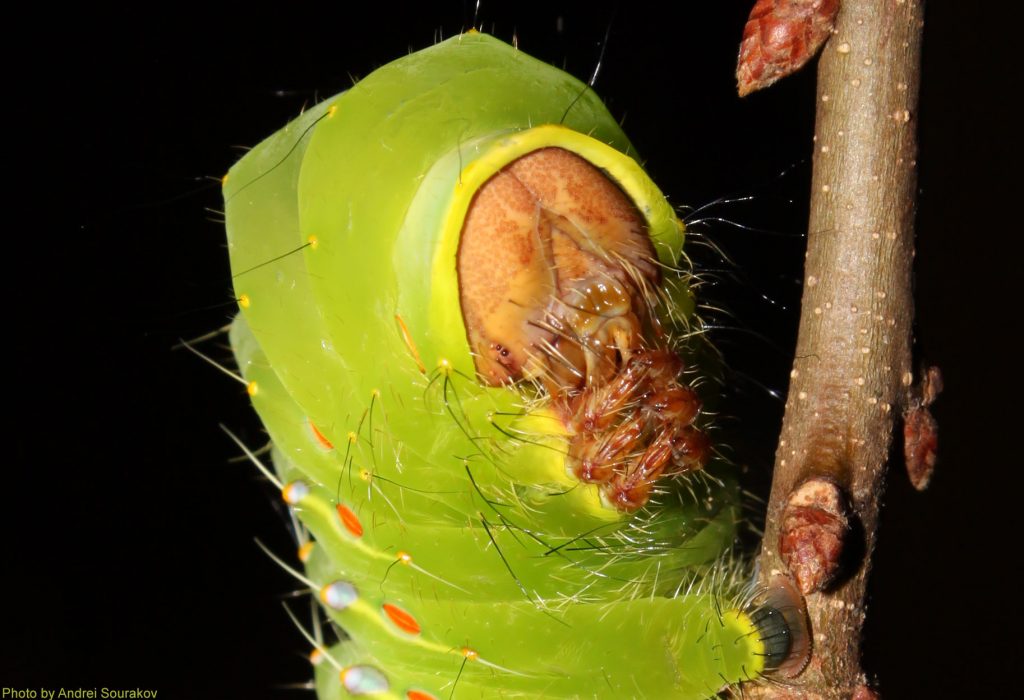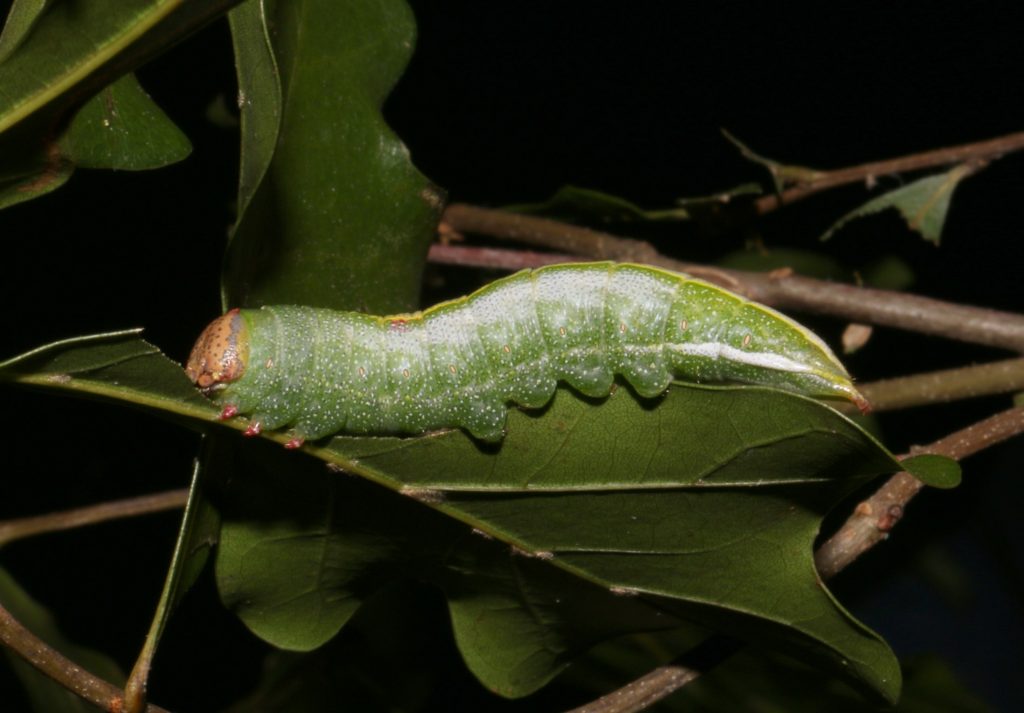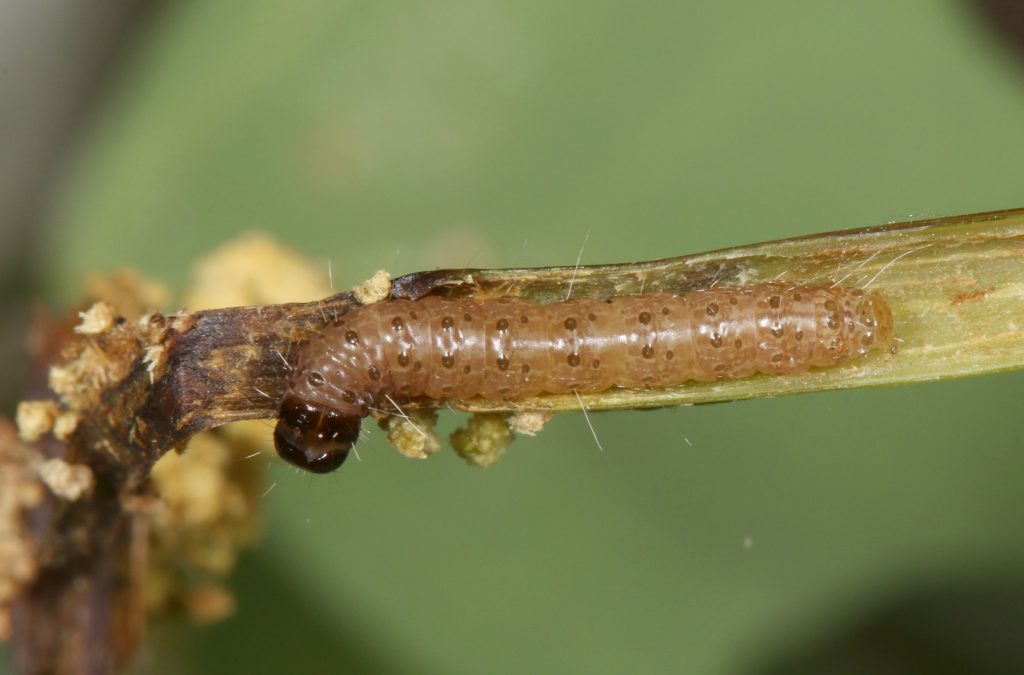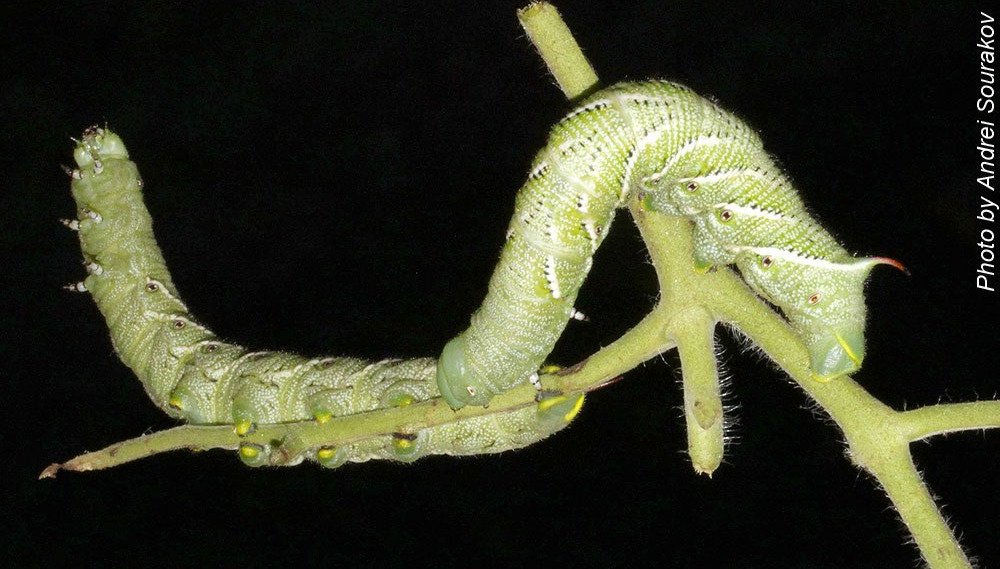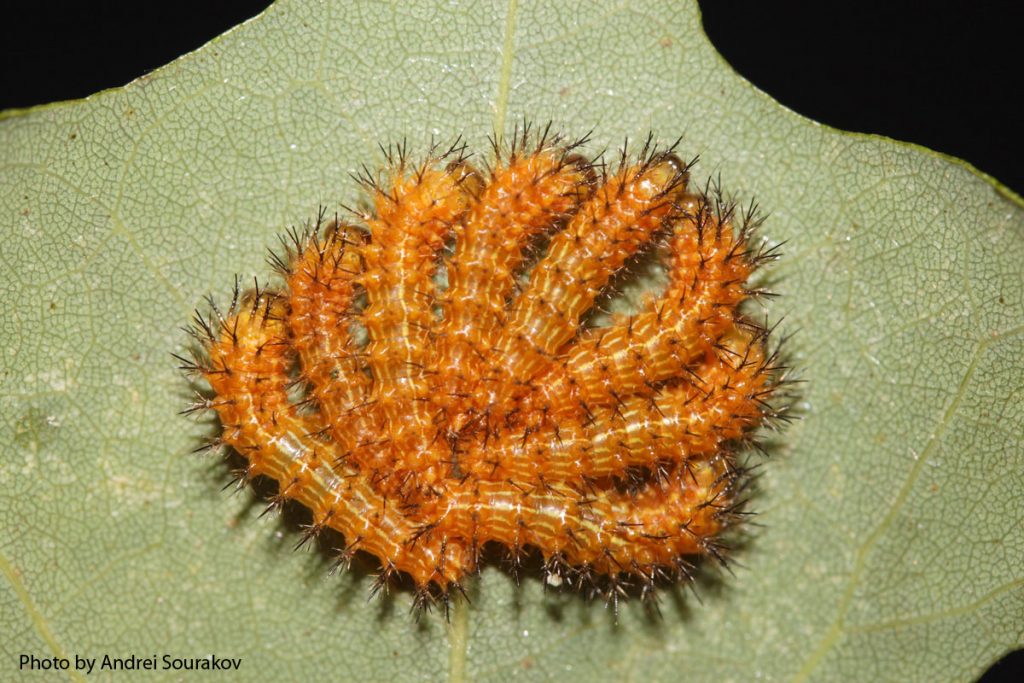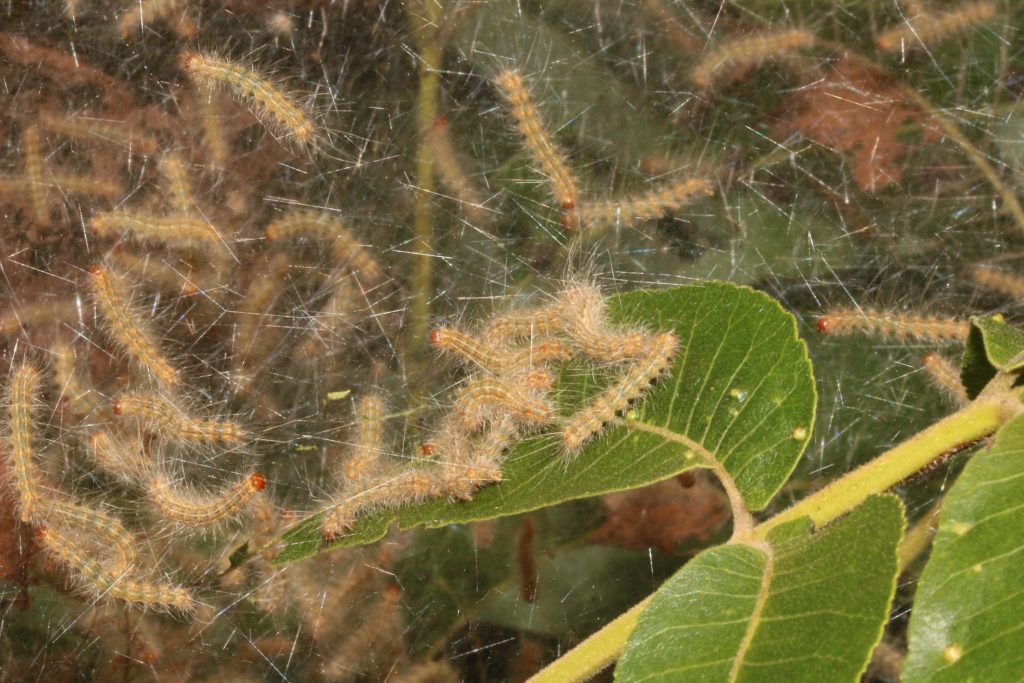As fall approaches, we look forward to cooler weather and more time outdoors to enjoy nature. Searching for caterpillars is a fun family activity. While most Florida caterpillars are harmless to touch, there are a few with urticating hairs (or setae) to watch out for. Information on stinging caterpillars is available through IFAS extension. Below are some caterpillars recently encountered in the Gainesville area.
One of the most striking caterpillars in our area is the Hickory Horned Devil (Citheronia regalis) also known as the Regal Moth or Royal Walnut Moth. These caterpillars grow to about 12 cm in length and feed on the leaves of several trees including Hickory, Pecan, Walnut, Sycamore, and Sweet Gum.
Below is a film clip of two of these giant caterpillars munching away on Sweet Gum leaves.
What do the adults look like?
Here is a list of the 12 caterpillars featured in this post with links showing the adults.
- Zebra Longwing
- Hickory Horned Devil
- Little Metalmark
- Legume Caterpillar
- Bella Moth
- Io Moth
- Saddleback Caterpillar
- Polyphemus Moth
- Saddled Prominent
- Erythrina Borer
- Tobacco Hornworm
- Fall Webworm
Here are some popular field guides for identification of caterpillars:
Minno, Marc C., Jerry F. Butler and Donald W. Hall. 2005. Florida Butterfly Caterpillars and Their Host Plants. University Press of Florida. 360 pp. ISBN-13: 978-0813027890.
Wagner, David L. 2005. Caterpillars of Eastern North America. Princeton University Press. 512 pp. ISBN-13: 9780691121444.
Wright, Amy Barlett. 1998. Peterson First Guide to Caterpillars of North America. 2nd. ed. Harper Collins Publishers. 128 pp. ISBN-13: 9780395911846.
Some online resources for identification:
